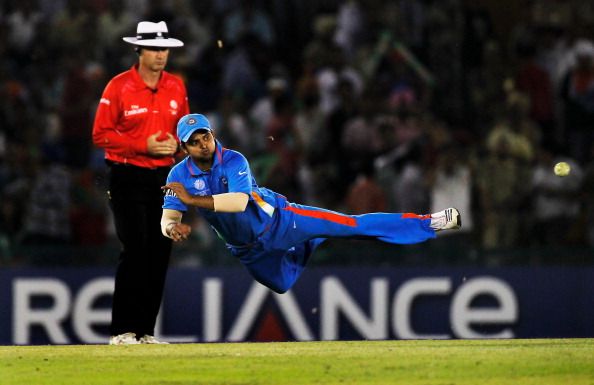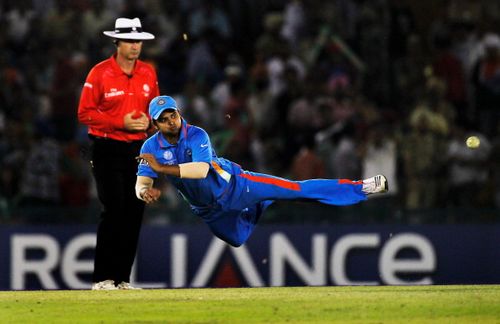
Cricket's transition from gentleman's game to youth's sport

Players like Suresh Raina contribute with not just the bat and the ball, but also for their fielding.
If the world of cricket suddenly grows quiet with no incredulously poor performances to criticize, no decisions debatable enough, no scams or scandals to make the headlines, you – I mean the bored skeptic in you – can always sit with a glass of wine with your best buddy and thump your fist on the table, tossing up a discussion on the age-old question. Nope, it’s not “When Sachin will retire?” It’s more of a generalised question of sorts – What’s the age for retirement in cricket?
Yeah, the answer is quite straightforward, as you have guessed it. A cricketer must continue as long as his body supports or as long as he can contribute to his team. Pretty simple it sounds, but the catch is that cricket boards across the world don’t seem to understand this simple piece of logic. Or maybe it’s the fans who fail to recognise the simplicity of the answer. And this gives birth to hundreds of questions, scores of hypotheses and thousands of suppositions regarding the relationship of age with the game.
Clearly speaking, the gentleman’s game is still luxurious of sorts if you compare it with football or tennis. However the long duration of the cricket matches serve as adequate compensation and this is what makes the sport so popular. Reason enough why cricketers can carry on even after mid-thirties, while the same proposition appears next to impossible for a footballer.
If we roll down the pages of history, we’ll find cricketers playing well past their forties and fifties. Wilfred Rhodes played Test cricket at the age of 52 years and 165 days. James Southerton even made his debut a few months before his 50th birthday! Even in the past half-century, a cricketer was considered to reach the zenith of his performances after 30 years. The likes of Sanath Jayasuriya, John Trycos, Brian Close, Graham Gooch and Bob Simpson retired only after crossing the 40 year mark. The trend still continues albeit occurrences being rare.
Two decades back, barring a young Sachin Tendulkar, the average age for international debut was 23 to 25 years. As the game has progressed, the intensity has increased and the game now demands much more agility and alertness. Fielding has now become one of the major criteria for selecting a player in the XI. There’s no dearth of talent in the pool, so the cricketing arena is now more competitive and ruthless. If you have got the physical fitness, you survive. If you haven’t, you are just wiped off the scene.
“Catches win matches” – the slogan has been revived once again and has given birth to a tagline – “Saving runs is the new method of scoring runs!” So when you see players giving their best on the field, diving like a panther and swooping up the ball like an eagle, you no longer wonder why the average age for debutants has come down to 20. As you see a team’s batting card, you can well recognise the young faces who have suddenly shot into fame as a result of instantaneous brilliance on the field. Most of them fail to survive the first three crucial years in the international arena, but if they do, they virtually seal their places in the squad.
Wait. What about the crowd and the fans? As the young men take the field, the Youngistaan continues cheering them off the field. A research agency report suggests that cricket is beginning to draw a younger and wider demographic of fans courtesy the advent of shorter and shortest formats of the game! The popularity of cricket is on the rise and the audience is getting younger day by day. Pretty understandably so, given the electrifying nature of the gentleman’s game getting gradually exposure.
What’s next? A day when cricket will be considered as a sport for the youth only? Only time will answer that. As for me, I’ve got the answer to my question. Yes, cricket is getting younger.